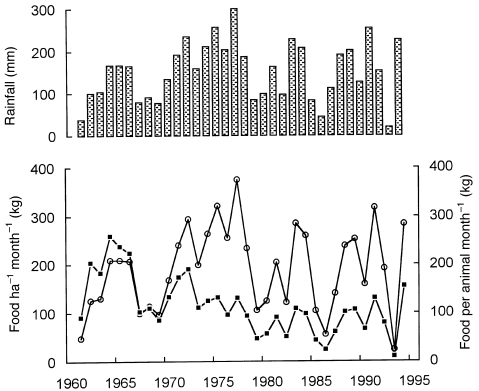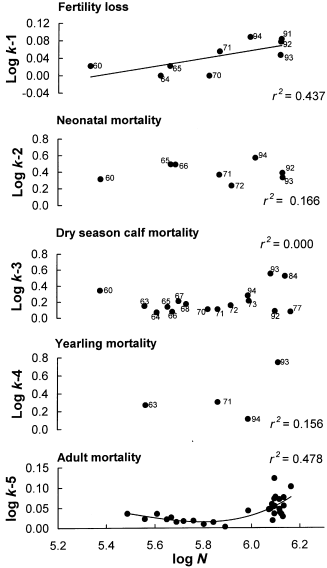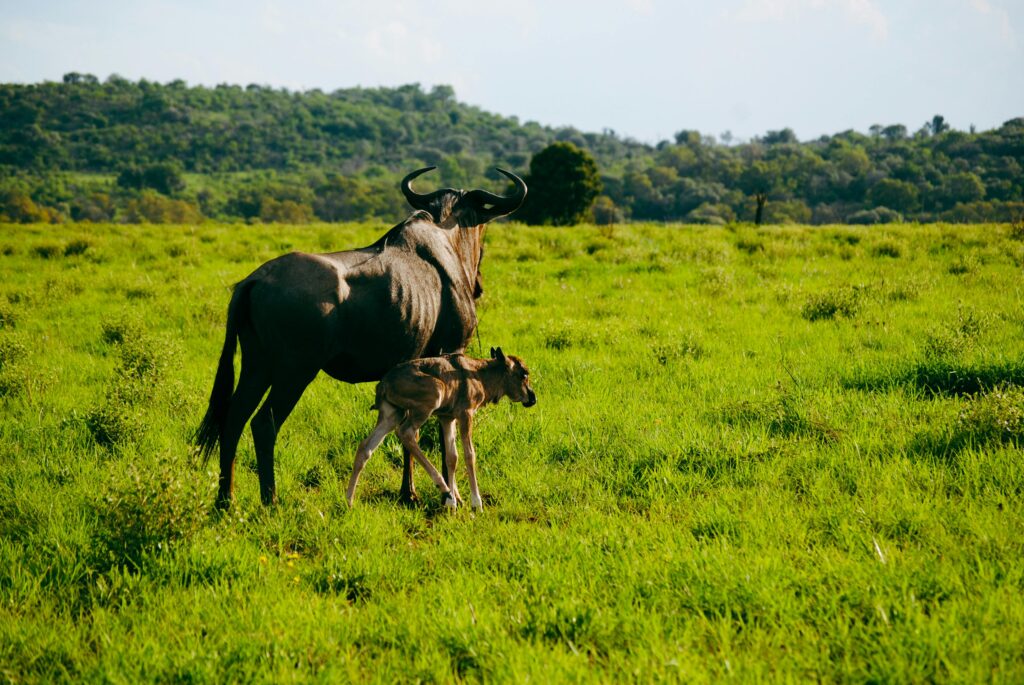The iconic migration of wildebeest in the Serengeti is one of the largest and most famous animal movements on Earth, involving over a million individuals traveling across the plains of Tanzania and Kenya.
A 40-year comprehensive study titled “Food Regulates the Serengeti Wildebeest: A 40-Year Record” by Mduma, Sinclair, and Hilborn provides deep insights into why these large-scale migrations occur. The findings emphasize that wildebeest migration is driven primarily by the search for food, influenced heavily by seasonal changes, population density, and environmental factors such as rainfall. Let’s break down the case for wildebeest migration using the vast statistical data from this study.
1. Migration Driven by Seasonal Rainfall and Food Supply
Wildebeest migrate to maximize access to food, particularly grass, which varies in availability across the vast Serengeti ecosystem due to highly seasonal rainfall. The study shows that rainfall is the key extrinsic determinant of food supply for wildebeest. During the wet season (November–May), wildebeest congregate on the southern Serengeti plains, where rainfall stimulates grass growth. This rich, short-grass habitat provides the essential nutrition needed for calving and early calf survival.

However, as the dry season (June–October) sets in, the grass in the southern plains dries up, and wildebeest must move northward in search of more abundant pastures. This is a critical phase of migration driven by the need for greener, more nutritious grass. Data from the study indicate that food availability in the dry season is often insufficient, causing wildebeest to suffer from undernutrition, which was found to account for 75% of all wildebeest deaths.
Key Statistic: The study shows that during the 1993-94 drought, dry-season rainfall was the lowest recorded in 34 years (25mm), resulting in a severe reduction in grass biomass and triggering a mass migration as wildebeest sought out regions with better food availability. During this period, adult mortality rose sharply, and the population dropped from 1.4 million to 900,000.
2. Migration as a Response to Population Density and Food Per Capita
The study highlights that Wildebeest population density directly affects food availability per capita, making migration essential for wildebeest to avoid overgrazing their food supply. As the wildebeest population increased from 240,000 in 1963 to a peak of 1.4 million by 1977, food availability per individual became increasingly limited, particularly in the dry season. The migratory movement helps distribute the population over a larger area, allowing them to access different grazing zones with less competition for food.
Wildebeest mortality was shown to be density-dependent. At higher densities, adult mortality increased sharply, indicating that migration helps prevent over-concentration in certain areas, thus alleviating food shortages. This behavior helps regulate the population, keeping it from outstripping the available food supply.
Key Statistic: During periods of high population density, adult pregnancy rates fell from 95% to 88%, and yearling pregnancy rates dropped dramatically from 83% to just over 20%. This decline in reproductive success is a density-dependent response to food scarcity, highlighting the need for migration to access more food and increase the chances of survival and reproduction.
3. Migration and Calf Survival
The survival of calves is one of the most critical factors in the population dynamics of wildebeest. The study shows that newborn calves (0-4 months old) experience the highest absolute mortality, especially during the dry season when food is scarce. Migration plays a crucial role in helping wildebeest avoid high calf mortality by enabling them to access wetter areas with more abundant grass during the early stages of calf development.

Calves born during the migration period are timed to benefit from the nutrient-rich grasses that flourish after the wet season rains. This synchronization of births with peak food availability ensures that calves have the best chance of survival. However, as the dry season progresses and food becomes limited, dry-season calf mortality (5-11 months old) becomes highly variable and density-dependent, further illustrating the importance of migration to access better grazing grounds.
Key Statistic: During the 1993 drought, calf survival rates dropped dramatically, with only 73% of calves surviving the dry season compared to 98.5% during the wet season. This sharp contrast underscores the critical role of migration in securing adequate food and improving calf survival rates.
4. Migration as a Strategy to Escape Predation
While undernutrition is the leading cause of wildebeest mortality, predation also plays a role, albeit a minor one. The study shows that predators such as lions and hyenas primarily target weak or moderate-condition animals, and migration helps wildebeest avoid high predation rates. By moving in large herds and migrating long distances, wildebeest make it difficult for predators to follow them consistently. Migration also provides a temporary refuge in the northern Serengeti, where predator populations are lower.
Key Statistic: The study indicates that less than 3% of adult wildebeest females die due to predation, making it clear that migration helps wildebeest evade predators by dispersing their population and limiting the ability of predators to concentrate their hunting efforts.
5. Long-Term Population Regulation Through Migration
Migration is not only about short-term survival; it also plays a critical role in the long-term regulation of the wildebeest population. The study shows that as population density increases, density-dependent mortality becomes more significant, particularly among adults and calves. Migration helps mitigate the effects of density dependence by allowing wildebeest to access different areas and resources, thus preventing population crashes due to local food shortages.
Key Statistic: During the period of population increase (1963–1977), the population grew at an average rate of 0.103 per year. However, once the population reached its peak, mortality increased due to undernutrition, and the population stabilized at around 1.2 to 1.4 million. Migration helps maintain this balance by ensuring that wildebeest do not deplete resources in one area.
Conclusion: Migration as a Survival Strategy
The Serengeti wildebeest migration is a survival strategy that allows these animals to cope with seasonal food shortages, density-dependent competition, and predation. The study, spanning over four decades, provides clear evidence that food availability, particularly during the dry season, is the key factor regulating wildebeest populations. Migration helps wildebeest maintain access to food, avoid high mortality rates, and regulate their population to prevent overgrazing and resource depletion.
This long-term monitoring has highlighted the critical role of migration in sustaining the Serengeti ecosystem. Without migration, the wildebeest population would face significant declines due to starvation, predation, and density-dependent reproductive failures, ultimately destabilizing the entire Serengeti ecosystem.

